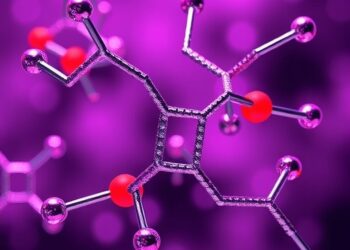Mimicking animals is a proven strategy in robot design. Take, for example, Haibo Dong’s seminal studies on how fins propel fish by churning the water in a vortex.
The tail, or caudal fin, is well known for producing thrust this way. What had never been shown, prior to recent research in Professor Dong’s lab in the Department of Mechanical and Aerospace Engineering at the University of Virginia, was how vortices from other fins amplify the effect.
The project, a collaboration with researchers at Harvard University led by Dong and UVA mechanical and aerospace engineering Ph.D. student Jiacheng Guo, was featured in the July-August 2024 issue of American Scientist. The article explored a paper by Guo and his colleagues, which was published last year in Physical Review Fluids.
At Harvard, ichthyology professor George V. Lauder’s team took high-speed, high-resolution videos of rainbow trout swimming in tanks of water containing fluorescent particles. The particles enable visualization of the fish bodies and water movement.
Then, using footage from multiple camera angles, the UVA team developed 3D computational models and homed in on vortices created by the anal fin located just forward of and below the tail fin.
Mother Nature knew exactly how to place that fin for optimal performance. The turbulence it foments interacts with the tail fin’s vortex to turbocharge the fish’s propulsion. The team’s models showed that moving the anal fin or altering its size decreased swimming efficiency — a big, energy-saving deal when you have to swim miles upstream to spawn.
School’s in Session
Dong, a member of UVA’s interdisciplinary Link Lab research center whose expertise spans fluid dynamics, biology and robotics, said the American Scientist article expanded the reach of their research to investigators in these fields. His team is helping to shed light on longstanding questions, such as how various fish fins function.
“Our findings are bringing us closer to replicating fishes’ superior swimming abilities in our engineering designs,” Dong said. “We are witnessing an increasing number of bioinspired fish-like robots incorporating multi-fin designs for speed and efficiency.”
Building on this research, the team is now focusing on fish schooling behaviors.
“There is a growing interest in this area, leading to new and intriguing questions about the roles of fish fins in group scenarios,” Dong said.
Among his team, the interest has led to the production of new videos — more of the vivid computational animations his lab uses to unveil nature’s hidden secrets.
Select Recent Publications
Postural Change of the Annual Cicada (Tibicen linnei) Helps Facilitate Backward Flight
Effects of body shape on hydrodynamic interactions in a dense diamond fish school




